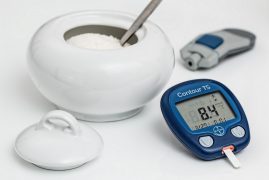What is Type 2 Diabetes?
Diabetes is a disease caused by sedentary life, unbalanced nutrition and genetic factors. Diabetes is divided into Type 1 and Type 2 diabetes. Two important factors in the development of Type 2 diabetes are the resistance of the insulin secretion in the body. It is generally seen in overweight people. Genetic, obesity and physically inactive life are among the factors in the formation of Type 2 diabetes. Insulin resistance and decreased insulin secretion are the main factors in triggering this disease. Being at risk of developing Type 2 diabetes is due to a family history of diabetes. In addition, obesity is at risk for those who over 45 years old, with hypertension disease, and those with thyroid problems.
What are the Symptoms of Type 2 Diabetes?
Symptoms include a large amount of urination, a lot of water drinking, consuming a lot of food or anorexia, dry mouth, weakness, tiredness, urination at night, blurred vision, itching.
There is no insulin production in Type 1 diabetes, but there is insulin production in Type 2 diabetes, but for some reason, it cannot use insulin. That’s why blood sugar level is always high. In the individual who experiences high blood sugar, damage occurs to the vessels first and then the organs. People with Type 2 diabetes are generally obese. Accordingly, obesity is the first reason in this diabetes. An individual who genetically suffers from this problem should pay particular attention to the weight issue, as the development of Type 2 diabetes is possible. Type 2 diabetes is a slow and insidious disease. For many years, without any symptoms, blood sugar goes high and causes a life in the person. This will delay diagnosis.
How Is Type 2 Diabetes Diagnosed?
If the blood sugar level is over 200 mg, if the glucose level is over 200 mg, the fasting sugar is over 120 mg, the diagnose is made.
If diabetes is diagnosed early without any organ damage, the patient with diabetes is actually the healthiest person. Because with the treatment that has begun, the troubles he experiences decreases and his life begins being high quality. It is wrong, in newly emerged diabetes, to say that organ is damaged yet. However, if it is diagnosed late or if the existing high blood sugar level is ignored by the patient, organ damage should be discussed. Eyes, kidneys and cardiovascular diseases suffer from organ damage. Kidney tests, ECG, exertion tests, eye examination will be checked.
What is the Treatment of Type 2 Diabetes?
Very first thing after treatment begins is a diet suitable for diabetes. The patient is definitely subjected to a physical exercise program. Insulin secretion is increased with pills suitable for diabetes. Thus, insulin effect is obtained and absorption is regulated.
In cases of untreated Type 2 diabetes and not applying treatment, patient can get into a coma. Vital organs begin to be affected. The eye, kidney, and cardiovascular system are triggered. Eye bleeding or even blindness occurs. With the onset of troubles in kidney function, dialysis is mandatory. Continuously high blood sugar causes the risk of congestion in the vessels and a heart attack. Brain bleeding, paralysis, gangrene or even goes to leg cuts. To protect from Type 2 diabetes, changes in lifestyle should be made, excess weight should be avoided, physical exercises should be performed and given pills or insulin treatment should be carefully followed.
Difference between Type 1 and Type 2 Diabetes
There is no insulin production in Type 1 diabetes, but not in type 2 diabetes. In type 1 diabetes, insulin treatment is started from the very beginning of the disease, in type 2 diabetes, insulin resistance is tried to be regulated with pills. In type 2 diabetes, patients are usually middle-aged and overweight. Type 1 diabetes patients can be babies, children, young people and the elderly, age doesn’t matter.
Treatment which is given to Type 2 diabetes patient, should be suitable for the case of patient. The doctor’s advice about lifestyle changes, diet, exercise must be done in a regular and a proper way.



